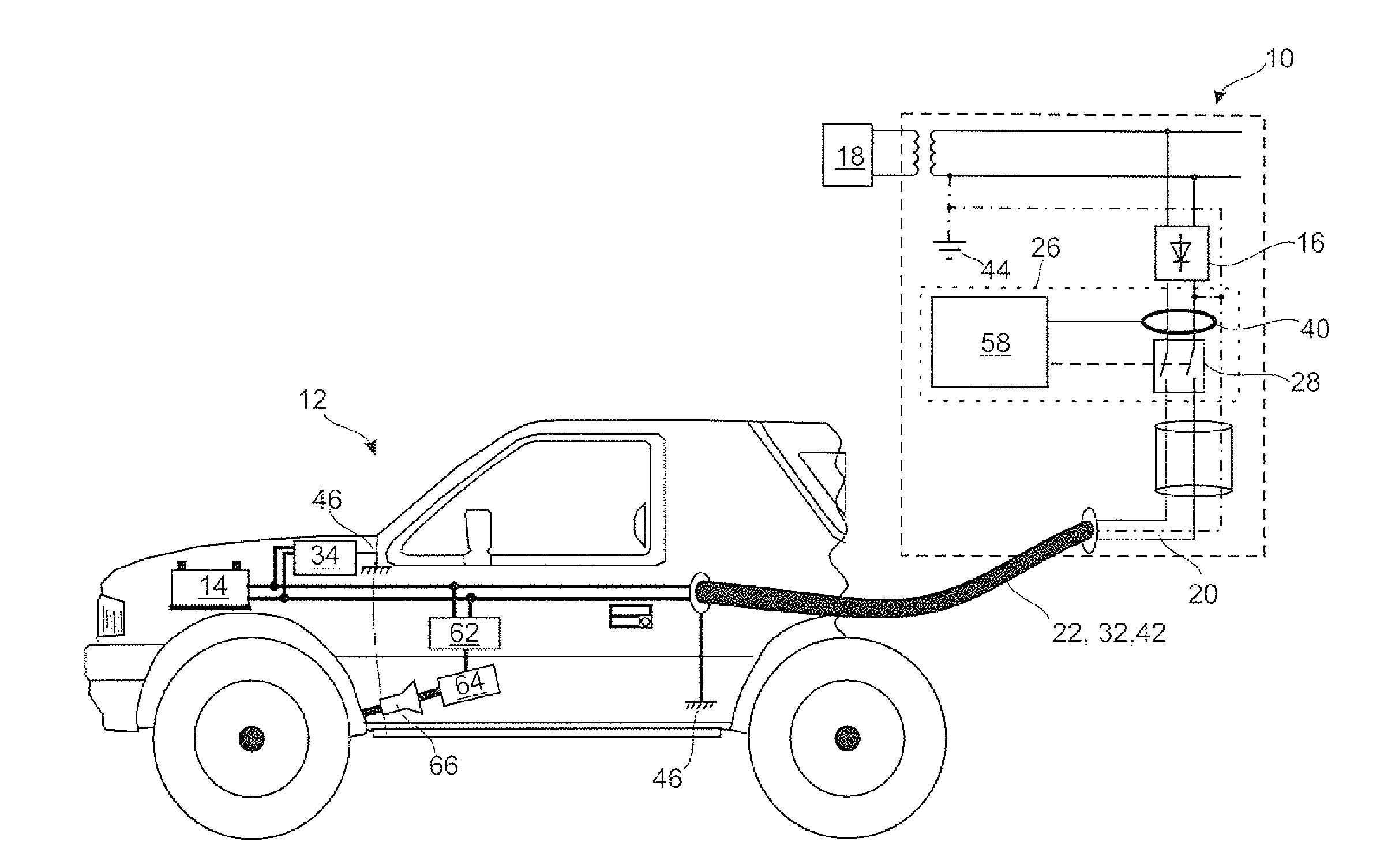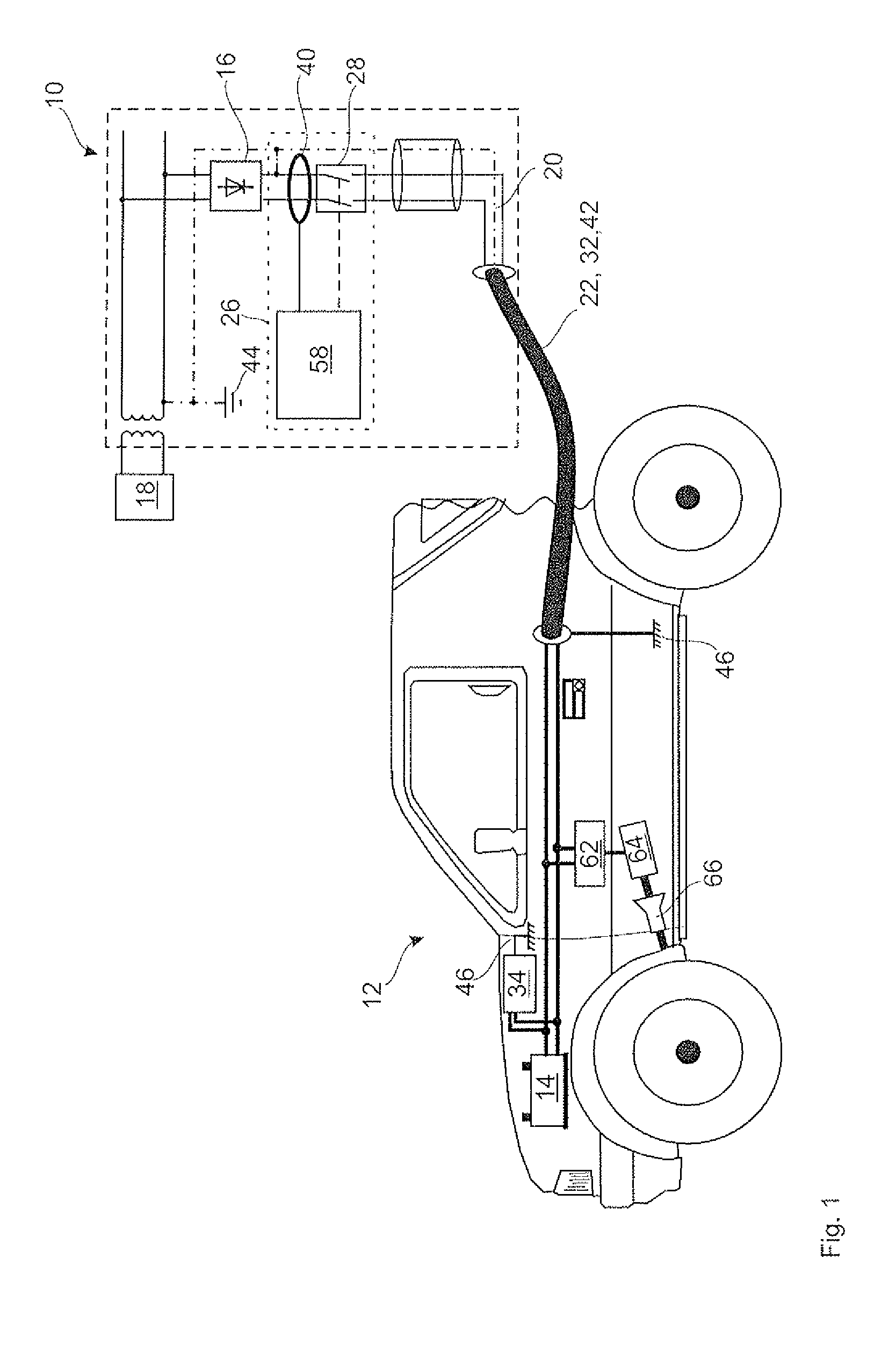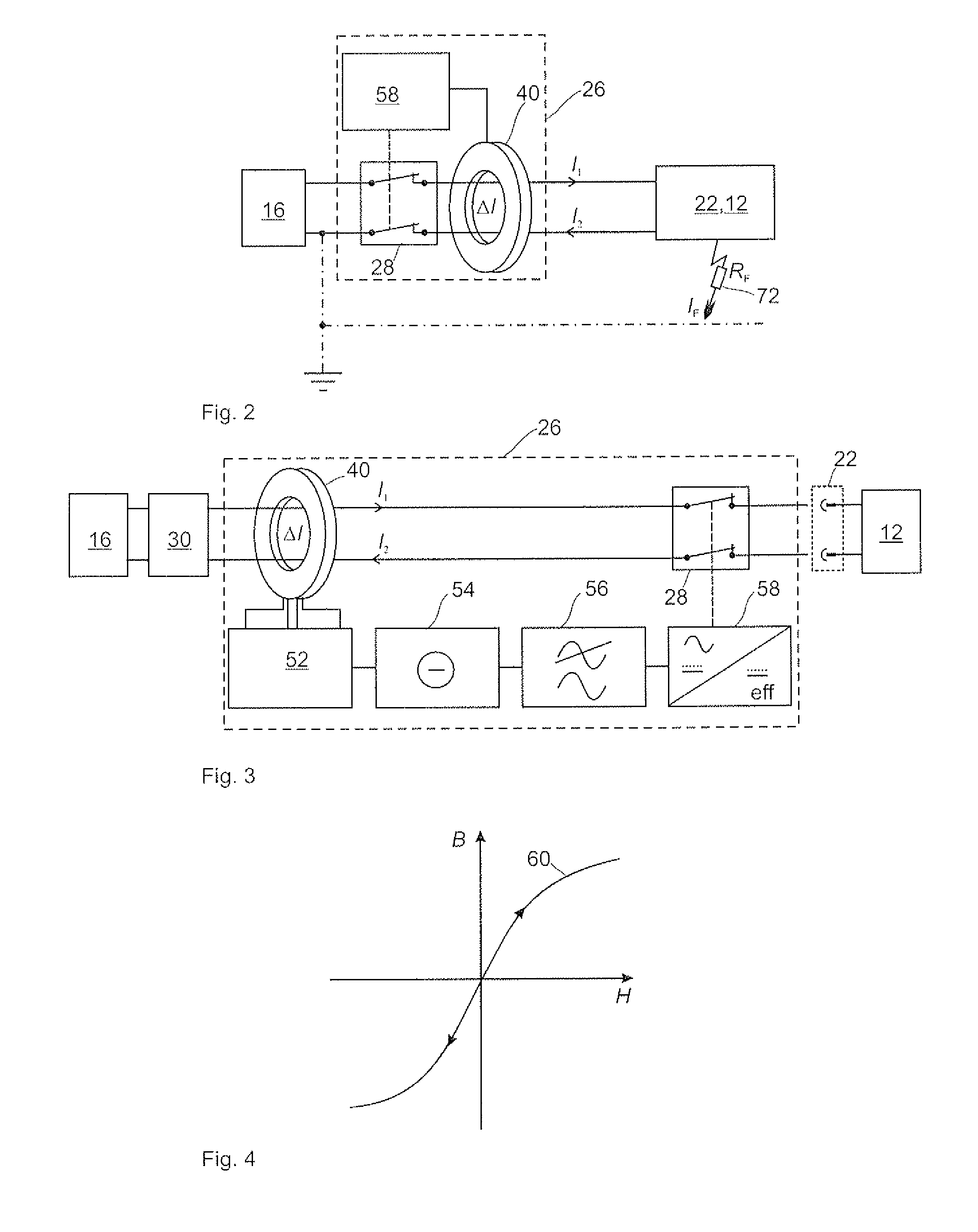Power charging device for an electric vehicle
a charging device and electric vehicle technology, applied in the direction of electric devices, hybrid vehicles, light-to-electric conversion, etc., can solve the problems of insufficient protection of fuse components, insufficient protection measures in the event of indirect contact, etc., to prevent further damage to the electronics of the vehicle or the power charging device. , the effect of increasing the electric safety
- Summary
- Abstract
- Description
- Claims
- Application Information
AI Technical Summary
Benefits of technology
Problems solved by technology
Method used
Image
Examples
Embodiment Construction
[0027]In the figures, like or similar components are denoted by like reference numerals.
[0028]FIG. 1 is a schematic view of a first embodiment of a power charging device 10, which is connected in this instance to a rechargeable battery of an electric vehicle 12 in order to charge an energy store 14. The power charging device 10 is connected by means of a contacting means 22, which comprises a connection cable and contacts a plug connection terminal on the side of the power charging device 10 and a socket connection terminal on the side of the electric vehicle 12. The contacting means 22 further comprises a data communication channel which, by means of a PWM modulated signal, modulates data over a live conductor for charging the energy store 14. The contacting means 22 further comprises a protective conductor connection 42 which connects the earth 44 of the power charging device to the vehicle earth 46, which is formed by the vehicle chassis, in order to produce an equipotential bond...
PUM
 Login to View More
Login to View More Abstract
Description
Claims
Application Information
 Login to View More
Login to View More - R&D
- Intellectual Property
- Life Sciences
- Materials
- Tech Scout
- Unparalleled Data Quality
- Higher Quality Content
- 60% Fewer Hallucinations
Browse by: Latest US Patents, China's latest patents, Technical Efficacy Thesaurus, Application Domain, Technology Topic, Popular Technical Reports.
© 2025 PatSnap. All rights reserved.Legal|Privacy policy|Modern Slavery Act Transparency Statement|Sitemap|About US| Contact US: help@patsnap.com



